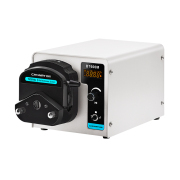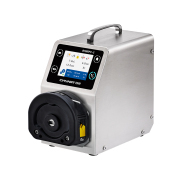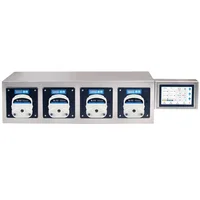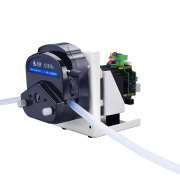Chonry Peristaltic Pump
What Is a Peristaltic Pump?
What Is a Peristaltic Pump?
A peristaltic pump is a type of positive displacement pump that uses a flexible tube inside a circular pump casing. The rotary motion of the pump moves the fluid around inside the flexible tube, allowing the pump to produce a pulsating action. Peristaltic pumps are often referred to as roller pumps.
This type of pump is typically designed to operate against pressures up to 16 bars. They feature rollers, shoes, and lubricant-filled casings to prevent abrasion of the tube. They are also able to support a wide variety of flow rates, making them ideal for a range of applications.
Ideally, the peristaltic pump should have a cast-metal body to minimize flexing. This prevents it from compromising the power of the pump. The tube should be of the proper diameter to ensure maximum pumping efficiency. In addition, it should have a minimum gap between the roller and the pump housing to ensure that the tube stays in place during pumping.
The speed and the displaced volume of a peristaltic pump are two interrelated parameters. The speed is the number of revolutions per minute, and the displaced volume is the volume of liquid inside the pocket (Pr2L). The faster the pump turns, the greater the flow rate.
Another benefit of peristaltic pumps is that they are inexpensive. Depending on their size, peristaltic pumps are usually low-maintenance and can be customized to fit your specific application. And, they are easy to repair, too. One of the most common problems with peristaltic pumps is that the flexible tubes wear out more quickly than the others, and sometimes rupture, resulting in caustic or dangerous fluid leaks.
Peristaltic pumps are widely used in industries, including mining, sewage treatment facilities, and laboratories. They can handle low to medium-viscosity fluids and abrasive particles, and are highly programmable. Flow rates range from 0.3 to 20 gallons per day.
Peristaltic pumps are also easy to clean, since the hose is the only part of the pump that needs to be changed. These pumps are also incredibly reliable in sterile and chemical environments. It is recommended to consult with an expert when purchasing a peristaltic pump. The experts at Peristaltic Pumps will guide you through the purchasing process.
Peristaltic pumps are often used to measure water quality. They can also be used for medical procedures and in agricultural vitamin dosing. For example, a peristaltic pump can be used to measure dissolved oxygen, conductivity, and pH levels in liquid. Some peristaltic pumps are even equipped with advanced control electronics to monitor fluid flow and monitor tube failure.
Peristaltic pumps are easy to install. However, when choosing one, it is important to consider the pressure and flow of the fluid to be pumped. If the pump is designed to be operated at higher pressures, it is important to select hoses that are good or excellent for the fluid that is being pumped. Furthermore, you should also consider the temperature of the pumped media.
0users like this.







